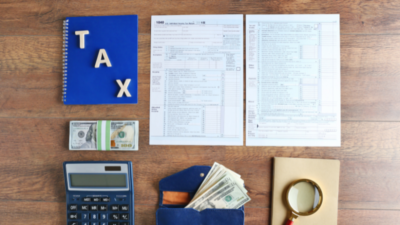
FAQs on Old Tax Regime vs. New Tax Regime
The Finance Act 2023 has introduced significant amendments to Section 115BAC, impacting the tax regime starting from the Assessment Year (AY) 2024–2025. By default, the new tax regime applies to individuals, Hindu Undivided Families (HUFs), Association of Persons (AOPs, excluding cooperative societies), Body of Individuals (BOIs), and artificial juridical persons. However, eligible taxpayers can opt to continue under the old tax regime, foregoing the benefits of the new system.
Choosing Between the Old and New Tax Regimes
Taxpayers can select their preferred tax regime annually when filing their Income Tax Return (ITR). For “non-business” income cases, this option is available every year and must be declared before the due date specified in Section 139(1) of the Income Tax Act.
For those with “income from business and profession” who wish to opt out of the new regime, submitting Form 10-IEA along with the ITR by the same deadline is mandatory. This form is also required if the taxpayer wants to switch back to the old tax system after opting for the new one. Remember, the new tax regime applies automatically unless an active choice is made to opt out.
Key Differences Between the Old and New Tax Regimes
-
Old Tax Regime: Offers multiple tax slabs with numerous exemptions and deductions, such as House Rent Allowance (HRA), Leave Travel Allowance (LTA), and investments under Section 80C.
-
New Tax Regime: Features fewer tax slabs but significantly restricts exemptions and deductions, simplifying tax calculations but possibly increasing taxable income.
Which Tax Regime Should You Choose?
Choosing the right tax regime depends on individual financial situations and preferences. The Income Tax Portal provides a handy Income and Tax Calculator to help taxpayers compare liabilities under both regimes. This tool allows you to make an informed decision based on your income, deductions, and exemptions.
Employee Responsibility: Informing the Employer
Employees must communicate their tax regime choice to their employer for the upcoming financial year. Failure to do so results in automatic enrollment in the default new tax regime, with taxes deducted as per Section 115BAC rates. Employees retain the right to change their tax regime by filing their ITR before the deadline.
Senior Citizens: Tax Benefits Under the New Regime
Previously, senior citizens enjoyed higher exemption limits—Rs. 3,00,000 for senior citizens and Rs. 5,00,000 for super senior citizens. The new tax regime replaces these with a standard tax-free income limit of Rs 7 lakh for all individuals, providing broader relief but without age-based distinctions.
Tax Rebate Differences Under Section 87A
-
Old Tax Regime: Resident individuals with income up to Rs 5,00,000 qualified for a full rebate of up to Rs 12,500.
-
New Tax Regime: Taxpayers earning less than Rs. 7,00,000 are eligible for a rebate of up to Rs. 25,000 or 100% of their income tax, whichever is lower.
Conclusion
The amendments to Section 115BAC introduce important changes affecting tax planning for AY 2024–2025. Understanding the nuances between the old and new tax regimes, compliance requirements, and benefits will help taxpayers make better-informed decisions to optimize their tax liabilities. If you need assistance navigating the tax regimes or filing your returns, consulting a tax professional can provide personalized guidance tailored to your financial situation. Would you like me to help you with further details or tools related to tax planning?








Leave a reply